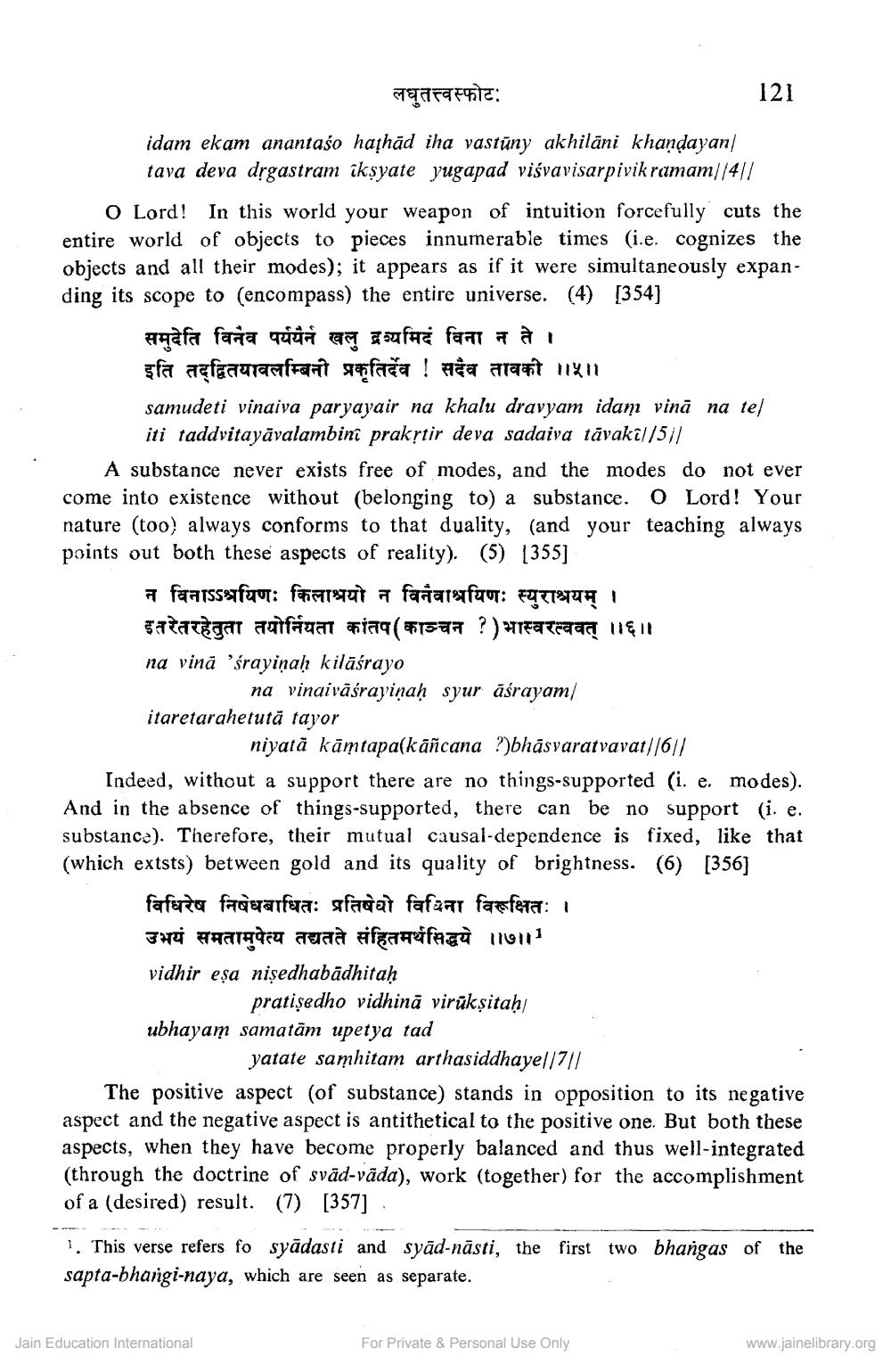________________
लघुतत्त्वस्फोटः
idam ekam anantaso haṭhād iha vastūny akhilāni khaṇḍayan tava deva drgastram ikṣyate yugapad viśvavisarpivikramam||4||
O Lord! In this world your weapon of intuition forcefully cuts the entire world of objects to pieces innumerable times (i.e. cognizes the objects and all their modes); it appears as if it were simultaneously expanding its scope to (encompass) the entire universe. (4) [354]
समुदेति विनैव पर्ययैर्न खलु द्रव्यमिदं विना न ते ।
इति तद्वितयावलम्बिनो प्रकृतिर्देव ! सदैव तावकी ||५||
samudeti vinaiva paryayair na khalu dravyam idam vină na tel iti taddvitayāvalambini prakṛtir deva sadaiva tavakî//5//
A substance never exists free of modes, and the modes do not ever come into existence without (belonging to) a substance. O Lord! Your nature (too) always conforms to that duality, (and your teaching always points out both these aspects of reality). (5) [355]
a fanissfor: किलाश्रयो न विनैवाश्रयिणः स्युराश्रयम् । इतरेतरहेतुता तयोर्नियता कांतप ( काञ्चन ? ) भास्वरत्ववत् ||६| na vină 'śrayiṇaḥ kilāśrayo
na vinaivāśrayiṇaḥ syur āśrayam/ itaretarahetută tayor
niyatā kāmtapa(kāñcana ?)bhāsvaratvavat||6||
Indeed, without a support there are no things-supported (i. e. modes). And in the absence of things-supported, there can be no support (i. e. substance). Therefore, their mutual causal-dependence is fixed, like that (which extsts) between gold and its quality of brightness. (6) [356]
fafata faquafaa: sfadaì fafaar faefera: 1
उभयं समतामुपेत्य तद्यतते संहितमर्थसिद्धये ॥७॥ vidhir eşa nişedhabadhitaḥ
121
pratiṣedho vidhinā virūkṣitaḥ
ubhayam samatām upetya tad
yatate samhitam arthasiddhaye||7||
Jain Education International
The positive aspect (of substance) stands in opposition to its negative aspect and the negative aspect is antithetical to the positive one. But both these aspects, when they have become properly balanced and thus well-integrated (through the doctrine of svad-vāda), work (together) for the accomplishment of a (desired) result. (7) [357]
1. This verse refers fo syādasti and syād-nāsti, the first two bhangas of the sapta-bhangi-naya, which are seen as separate.
For Private & Personal Use Only
www.jainelibrary.org




